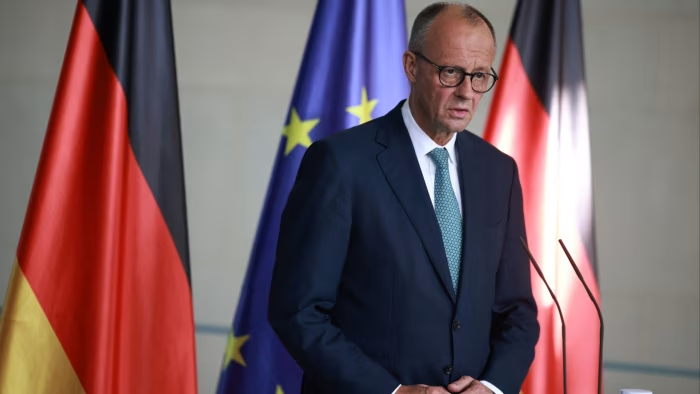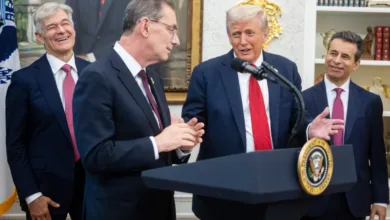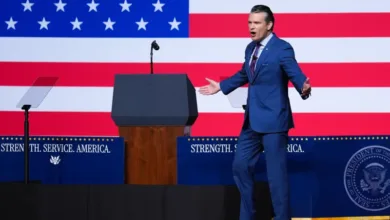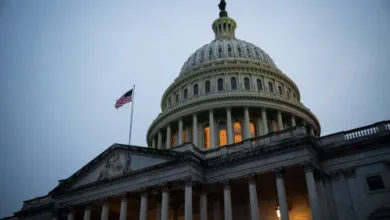EU–US Trade Tensions Escalate: Investor Confidence Collapses Amid New 15% Tariff Regime

Investor confidence across the eurozone dropped sharply today, fueled by the unveiling of the new trade framework with the United States. According to the Sentix index, investor mood deteriorated significantly following the deal, with markets interpreting the pact as a resounding win for trump and a heavy economic blow to European exporters.
Sentix analysts described it as a “deal that dampens the mood,” noting that Germany and Switzerland showed the steepest declines in confidence. Global markets are now bracing for broader disruptions, as U.S. breakingnews outlets project possible extensions of reciprocal tariffs to countries including Brazil, India, and Taiwan.
Details of the Finalized Deal
Under pressure from threatened U.S. tariffs as high as 30–50%, European officials reached a critical agreement in Scotland last week. The deal established a flat 15% tariff on most EU exports into the U.S., down from an originally threatened 30% rate. In return, the U.S. signaled suspension of pending tariffs on $93 billion worth of EU goods for a six-month window while negotiations continue.
EU leaders framed the compromise as a path to stability, but critics argue it significantly undermines the bloc’s negotiating leverage.
Brussels Responds: Delay or Capitulation?
Earlier today, Brussels officially announced a six-month delay on planned retaliatory tariffs targeting U.S. imports valued at €93 billion. The decision aims to allow more time for a final trade statement, but it’s been met with heavy criticism from Berlin’s finance minister, who called the move “too weak” and demanded a firmer negotiating stance.
Many officials in whitehouse projections also warn that unresolved uncertainties—especially around steel, aluminum, and auto part quotas—make the deal feel more like temporary reprieve than resolution.
Why This Matters Now
-
Market Reaction: European indices slid across major exchanges. Retail and auto sectors are bracing for lower margins.
-
Policy Shifts: Most European governments now face pressure to pivot toward self-reliance and reduce dependence on U.S. markets.
-
Investor Hesitation: Institutions are delaying capital commitments pending clarity on trade terms.
-
Rhetoric Intensifies: Comments in fox and new media outlets highlight frustration over perceived European concessions and potential erosion of sovereignty.
Dragged Into the Trump Legacy
Though no longer in office, donaldtrump policies still dominate the contours of U.S. trade strategy. Analysts argue today’s deal mirrors trumpnews “America First” doctrine—leveraging tariffs and negotiation pressure to reshape terms in favor of U.S. exporters and energy producers.
Meanwhile, federalreserve and Chair jeromepowell remain quiet, though speculation is growing that further action might align with U.S. protectionism—especially if inflation trends persist.
Short-Term Trade Scenarios
Stable, Low-Conflict Path
If the six-month window is used constructively, and essential goods (like wine, pharmaceuticals, semiconductors) secure exemptions, tensions may ease.
Escalation Path
If ambiguity remains or quotas are mishandled, retaliatory tariffs could resume on schedule, or new tariffs may target U.S. autos, digital services, or even tech giants.
Global Realignment
This may accelerate EU talks with CPTPP or other trade partners as alternatives to Washington. Some bloc members are exploring new regional trade corridors to reduce dependency.
Voices from Europe
In Germany, Finance Minister Lars Klingbeil publicly questioned Brussels’ bargaining power and called for a more unified, assertive EU stance. Meanwhile, French officials warn that public sentiment may back populist alternatives if the bloc appears weak.
At the same time, gutfeld-style commentators emphasize that America has regained leverage, and that European exporters will eventually adapt—or relocate.
Civil Society & Long-Term Risks
Civil and business organizations caution that while short-term stability is achieved, Europe may face structural vulnerability. Diverging regulations, shrinking manufacturing output, and eroding global competitiveness could challenge growth in coming years.
Many small firms now fear they lack liquidity or flexibility in case of further U.S. trade shocks.
Why This Matters to Americans
-
Consumers: Could see price shifts due to reciprocal tariffs—especially on electronics or auto parts.
-
U.S. exporters: Gain easier access to EU markets.
-
Policy Makers: Must balance economic advantage with global goodwill to avoid alienating allies.
-
Investors: Are reshaping risk profiles amid looming global realignments.




